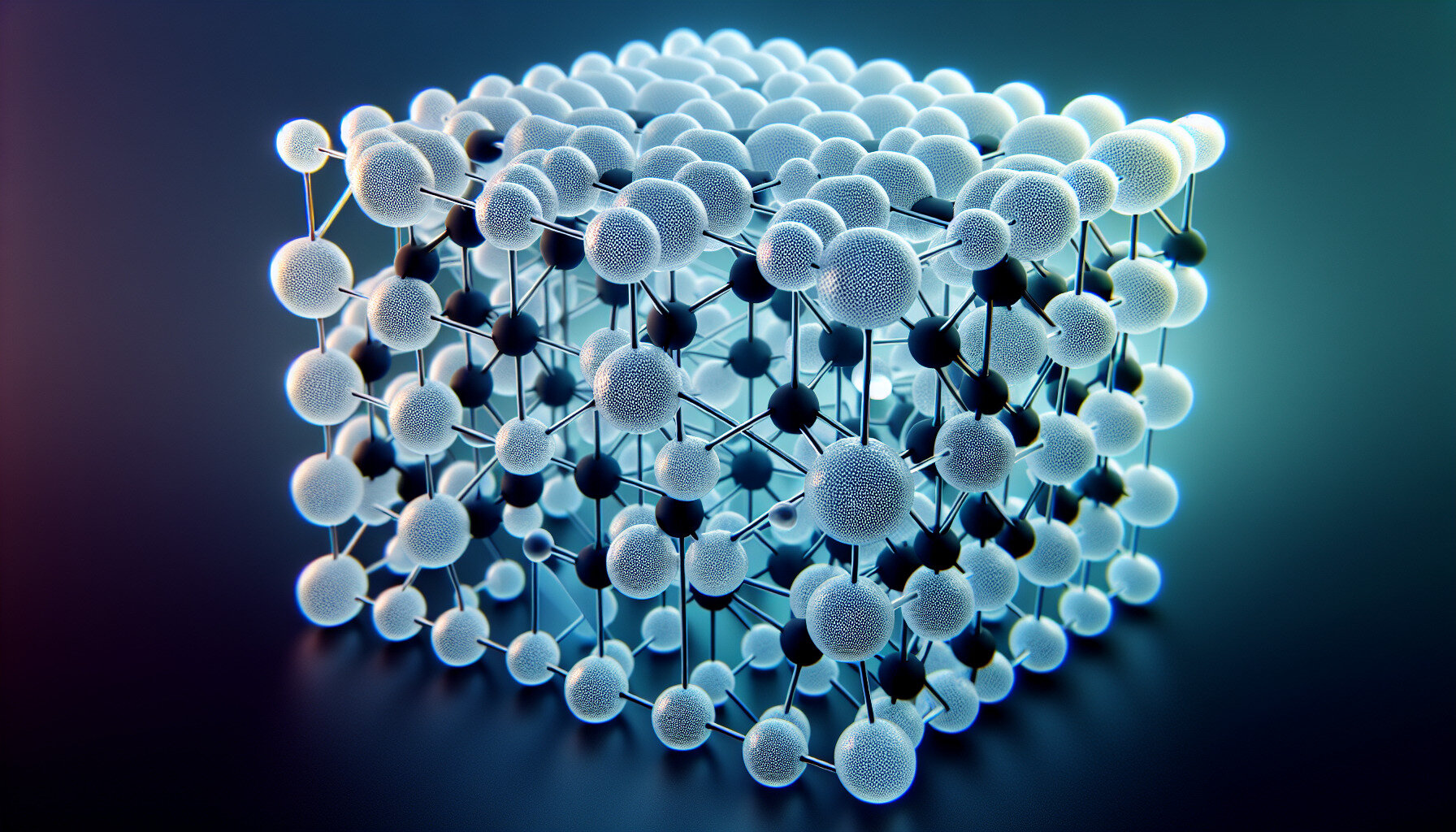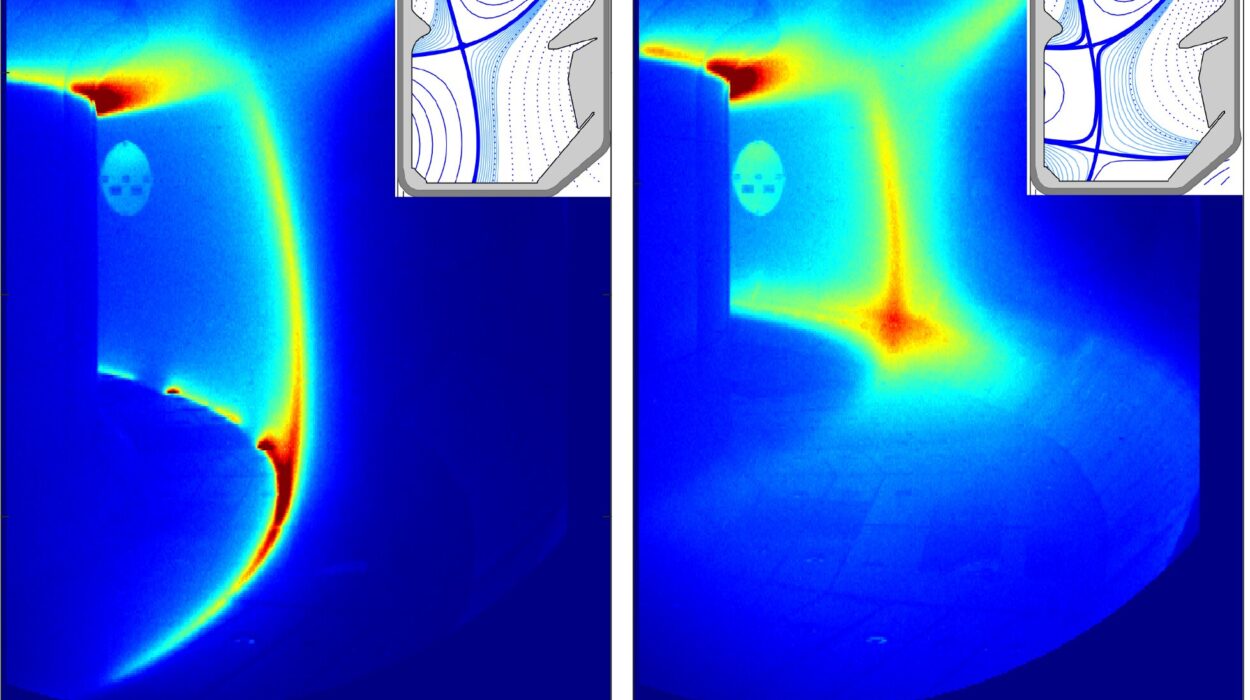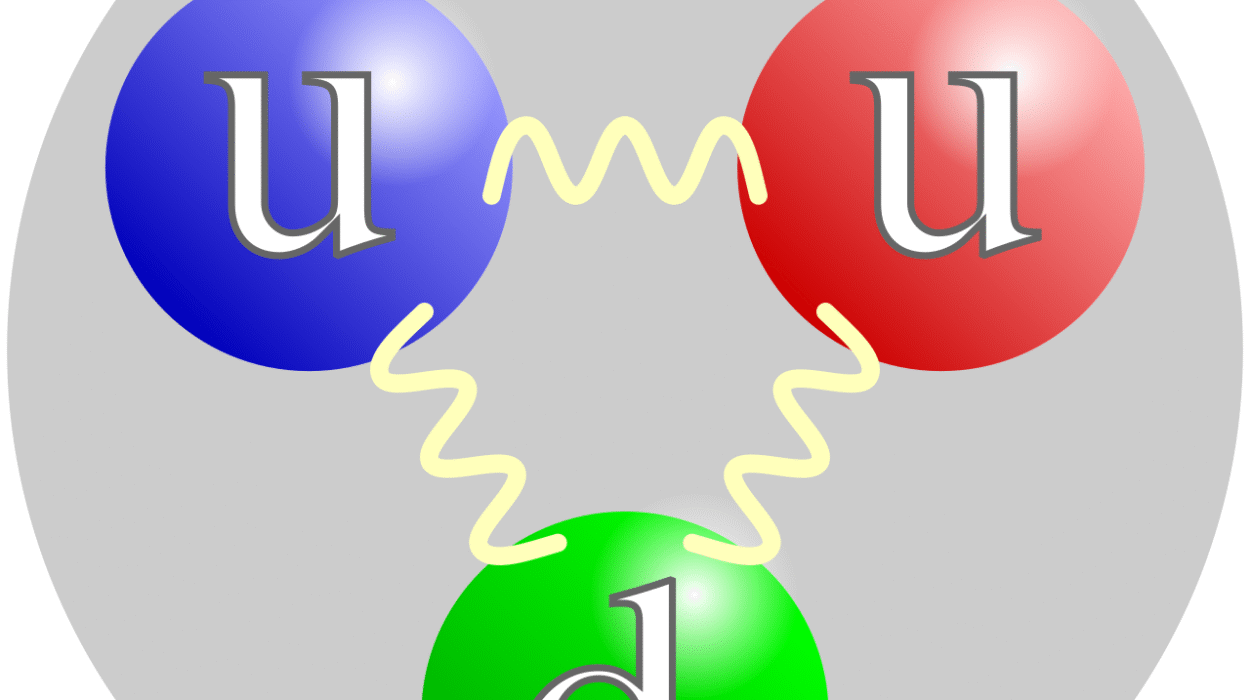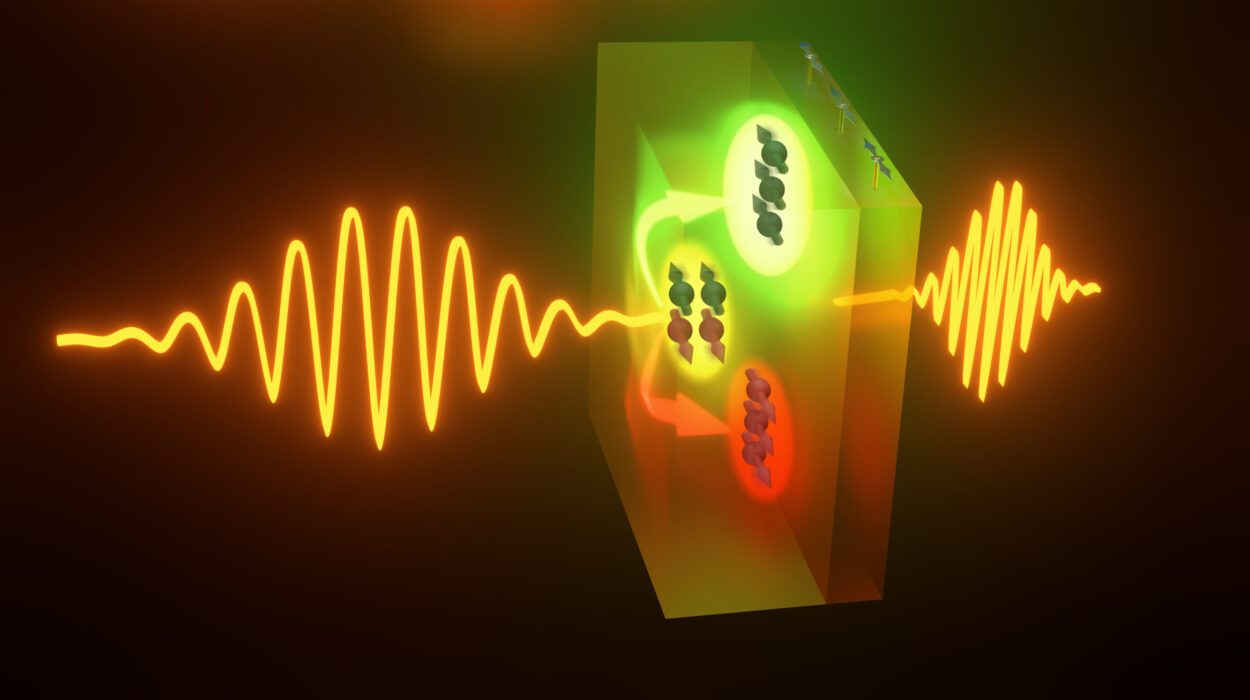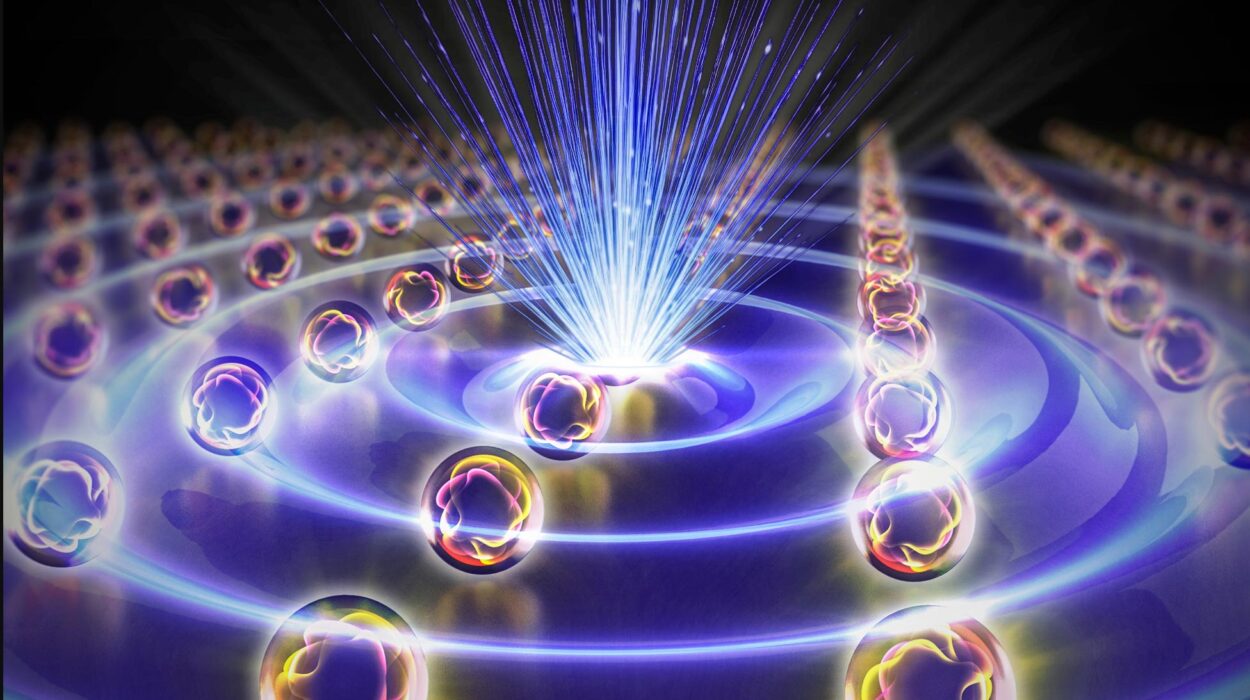In the shadowy realm of atoms and molecules, where matter transforms, binds, and breaks apart, an invisible drama unfolds on the surfaces of metals. These atomic stage plays are at the heart of many of our most crucial technologies: fuel cells that convert chemical energy into electricity, catalytic converters that scrub pollutants from exhaust fumes, and hydrogen production processes that could one day power entire cities cleanly.
At the core of these reactions are metallic surfaces—complex, electron-rich landscapes where atoms don’t just sit passively but dance, jump, and collide. Understanding how these atoms move and why they behave the way they do is one of the great challenges of modern science. It’s also one of the keys to designing better materials, more efficient chemical processes, and sustainable energy solutions.
Yet, as it turns out, simulating the motion of atoms on these surfaces isn’t as straightforward as one might hope. It’s a bit like trying to predict the trajectory of dancers across an ever-shifting stage where the floor pushes back, the dancers change mass mid-step, and some can even pass through walls.
To understand this complexity, we have to dig deep—right down to the fundamental particles that make up atoms: electrons and nuclei.
Unequal Partners: Electrons and Nuclei in Atomic Motion
Atoms are not indivisible. At their heart lies the nucleus, a cluster of protons and neutrons, surrounded by a cloud of fast-moving electrons. But these two components are far from equals. The mass of an electron is nearly 2,000 times smaller than that of even a hydrogen nucleus (a single proton). That imbalance plays a defining role in how atoms behave in materials, particularly on metal surfaces.
Because electrons are so light, they can respond almost instantly to changes in their environment. If a nucleus shifts even slightly, the surrounding electrons rapidly readjust. This enormous difference in reaction time has allowed physicists and chemists to use a powerful simplification known as the Born-Oppenheimer approximation (or “adiabatic” approximation). In this view, the fast electrons are always assumed to stay in their ground state, perfectly adapting to the slow dance of the heavier nuclei.
And in many situations, this simplification works beautifully. It makes solving the complex equations of quantum mechanics vastly more manageable. Researchers can track how atoms move and how bonds break and form, all while assuming the electrons are riding smoothly in the background.
But what if that’s not always the case?
When Electrons Push Back: The Emergence of Friction
On metallic surfaces, the Born-Oppenheimer picture can start to break down. Here, the sea of electrons isn’t always a silent spectator. Sometimes, electrons get stirred up by the movement of nuclei, and in turn, they begin to exert forces back on the atoms—altering their trajectories, slowing them down, or diverting them altogether.
This phenomenon is known as non-adiabatic coupling, and one of its most intriguing manifestations is something called electronic friction. It’s a subtle but critical force. Imagine pushing a puck across a sheet of metal—not only does the surface slow it down due to normal friction, but in the atomic world, a swarm of electrons also rises up, pushing back against the motion in a deeply quantum mechanical way.
In classical mechanics, we’d describe this as a drag force—like air resistance. But atoms and electrons don’t obey the same rules as baseballs or bullets. At this scale, quantum mechanics rules, and so this friction is not like anything we experience in daily life. It’s diffuse, probabilistic, and often deeply entangled with the memory of where an atom has been.
Yet despite its complexity, electronic friction plays a profound role in chemistry. It influences how atoms stick to surfaces, how they vibrate, how they move from site to site, and ultimately, how fast and efficiently chemical reactions occur.
The Quantum Nature of Nuclei: Tunneling, Zero-Point Energy, and Strange Escapes
If electrons are tricky, nuclei are no less mysterious. While we might imagine protons and neutrons as tiny billiard balls, their actual behavior is governed by quantum rules that would make Lewis Carroll proud.
For instance, even at absolute zero—the lowest possible temperature where motion should theoretically cease—nuclei continue to jiggle. This residual motion is known as zero-point energy, a quantum effect that means atoms can never be perfectly still. This has real consequences. It can allow atoms to hop over energy barriers more easily, or even leak through them entirely.
This last trick is perhaps the most startling: quantum tunneling. If a classical particle doesn’t have enough energy to climb a hill, it stays put. But a quantum particle—like a nucleus—can sometimes appear on the other side of the barrier, as if it had tunneled through solid rock. This is not science fiction; it’s a fundamental reality of the quantum world, and it’s responsible for phenomena ranging from radioactive decay to the fusion reactions that power the sun.
So when researchers try to simulate how atoms move on a metal surface, they’re not just watching marbles roll around—they’re trying to model ghostlike particles that can sneak through walls, jitter even in their sleep, and leave behind trails that influence future behavior.
The Simulation Challenge: Bringing Friction and Quantum Motion Together
For decades, simulating these atomic motions has been a balancing act. On one hand, scientists had sophisticated models to handle electronic friction—mostly rooted in semi-classical physics, which approximated the nuclei as classical particles feeling quantum forces. On the other hand, there were quantum nuclear methods, like path-integral molecular dynamics (PIMD), that treated the nuclei properly as quantum particles—but typically ignored the feedback from excited electrons.
Each approach had strengths, but they told only half the story.
This left an open challenge in computational chemistry: how to combine the drag of electronic friction with the strange, ghostly motion of quantum nuclei in a realistic and computationally practical way. Without such a combination, simulations might give answers that seem right—but for the wrong reasons. Worse, they could mislead researchers developing next-generation catalysts or materials for batteries and fuel cells.
It’s this scientific crossroads that brought together George Trenins and Mariana Rossi.
The Breakthrough: A Memory-Infused Quantum Friction Model
In their 2024 paper in Physical Review Letters, Trenins and Rossi unveiled a new computational framework that marries the two worlds: quantum nuclear motion and electronic friction—and does so with a twist.
Their model isn’t just a mash-up of old methods. It’s built on the path-integral formulation of quantum mechanics, a view developed by physicist Richard Feynman that imagines particles as exploring all possible paths simultaneously. This method captures the full quantum behavior of atomic nuclei, including tunneling and zero-point motion.
But the novelty lies in what Trenins and Rossi added to this: “memory-dependent” electronic friction. Instead of treating the drag on an atom as a simple function of its current velocity, their model remembers where the atom has been. Like ripples spreading on a pond, the electronic environment retains a history of atomic motion, and this history influences the present.
This may sound esoteric, but it turns out to be crucial. Many previous simulations using classical nuclei had accidentally matched experimental results—not because they were right, but because errors canceled out. Trenins and Rossi’s method shows that by including both quantum nuclear motion and memory-driven friction, researchers can get the right results for the right reasons.
Catalysts, Selectivity, and the Future of Clean Energy
Why does this matter?
Because on a practical level, the behavior of atoms and molecules on metallic surfaces governs some of the most important chemical processes in the modern world. Catalysts—especially those made from precious metals or emerging materials like single-atom alloys and 2D materials—are often designed to fine-tune how molecules land, stick, vibrate, react, and leave.
If we can accurately predict these steps, we can design catalysts that are faster, more selective, and more energy-efficient. We could reduce the precious metals needed for industrial reactions, cut carbon emissions, and open the door to new fuels like hydrogen or ammonia—all without trial-and-error experiments that take years and cost millions.
“Our approach aims to get the right answer for the right reason,” Trenins explains. “By capturing the interplay between quantum nuclei and electronic friction, we can gain deep insight into energy exchange at conducting surfaces.”
Rossi adds, “It is definitely exciting to have a method that can be applied to more complex systems in their full dimensionality. This will allow us to explore these effects in systems that were previously not amenable to such simulations.”
Indeed, their method could help explain anomalies seen in experiments, such as why certain molecules vibrate for longer than expected, or why diffusion rates on metal surfaces don’t match classical predictions. It could also uncover new reaction mechanisms hidden behind quantum barriers—doors we didn’t know molecules could open.
Beyond the Metal: Toward a Universal Theory of Atomic Motion
While the focus of this work is on metallic surfaces, the implications stretch much further. Similar non-adiabatic and quantum effects play a role in biological electron transfer, solar cell materials, and even the behavior of protons in water. Anywhere atoms move through an electronic sea—whether that’s a metal, a semiconductor, or a biological molecule—these coupled dynamics are at play.
The hope is that one day, methods like the one developed by Trenins and Rossi will form the backbone of predictive modeling across chemistry and materials science. With enough computational power, we might simulate entire electrochemical devices, fuel cells, or even living cells at an unprecedented quantum level.
But more immediately, this work reminds us of something profound: that even the smallest particles, when seen through the lens of quantum mechanics, can hold the key to grand technological revolutions.
Conclusion: Watching Atoms Dance with Precision
In the end, the motion of a hydrogen atom on a nickel surface might seem trivial. But to the trained eye—and the quantum computer—it’s a glimpse into the intricate ballet of nature’s smallest actors. By blending quantum mechanics with real-world complexity, Trenins and Rossi have brought us one step closer to understanding and controlling this dance.
Their work doesn’t just refine a model—it reshapes our understanding of how matter behaves at the intersection of mechanics, electricity, and chemistry. It’s a reminder that science is not just about answers—but about asking better questions, and building better tools to explore those questions with fidelity.
And in that spirit, their method offers more than equations. It offers a vision of a future where we simulate before we synthesize, predict before we pour, and where the subtle whispers of quantum friction may lead us to cleaner energy, better chemistry, and a deeper harmony with the materials we build our world from.
Reference: George Trenins et al, Non-Markovian Effects in Quantum Rate Calculations of Hydrogen Diffusion with Electronic Friction, Physical Review Letters (2025). DOI: 10.1103/PhysRevLett.134.226201
